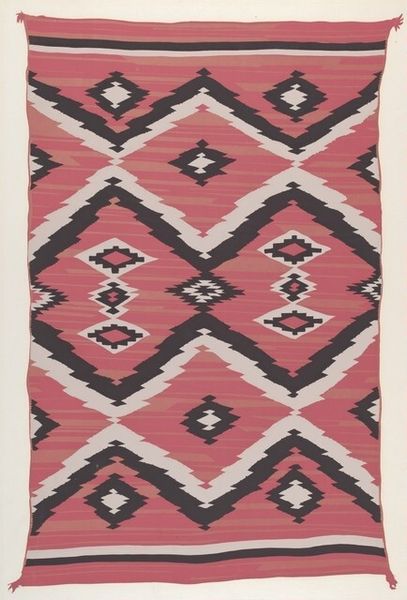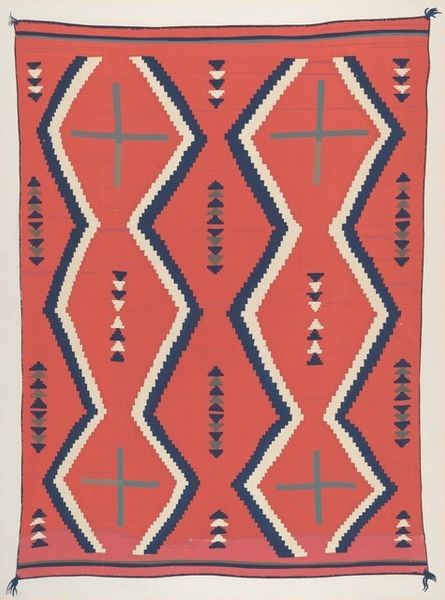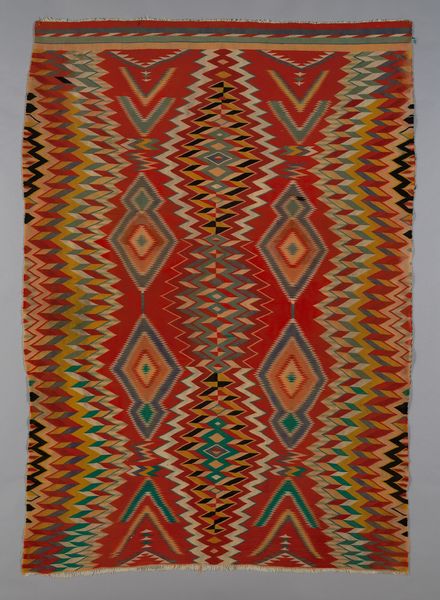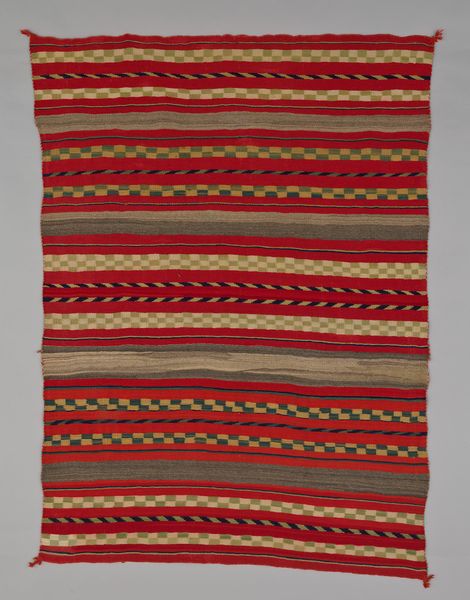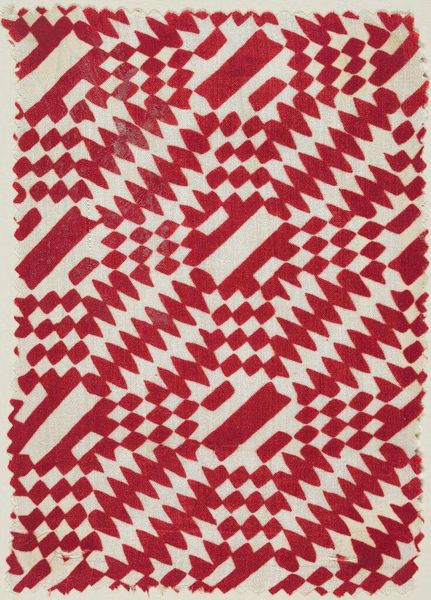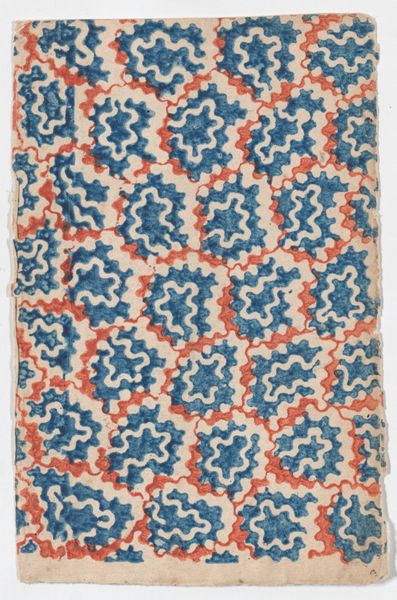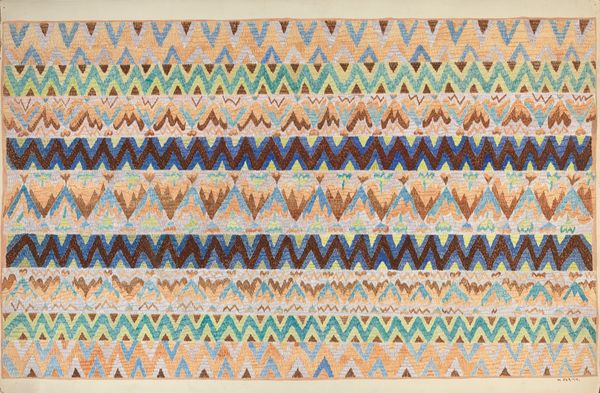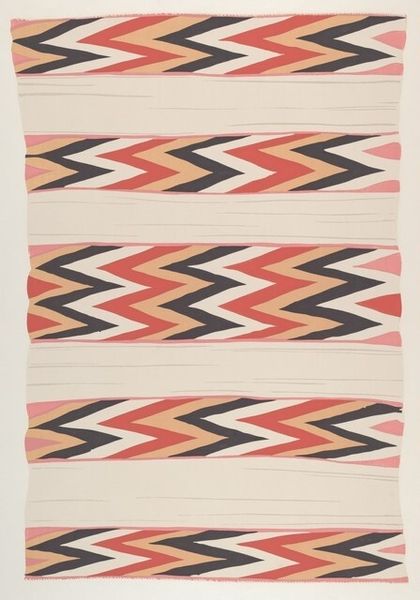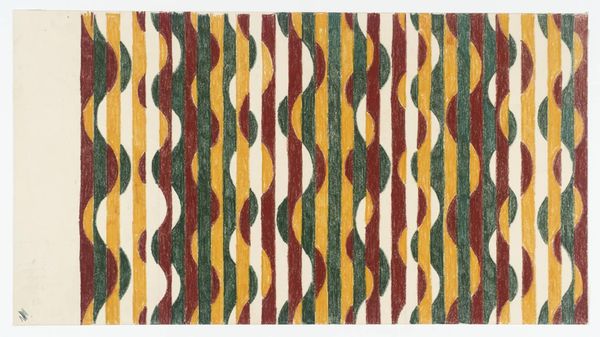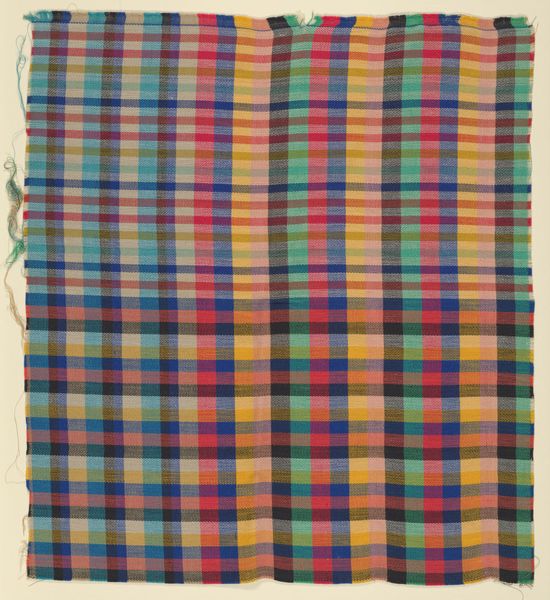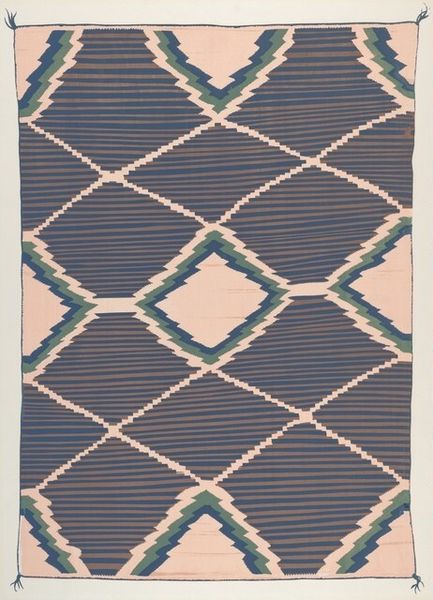
# print
#
geometric pattern
#
pattern design
#
abstract pattern
#
organic pattern
#
repetition of pattern
#
vertical pattern
#
pattern repetition
#
textile design
#
imprinted textile
#
layered pattern
Dimensions: image: 590 x 380 mm sheet: 661 x 507 mm
Copyright: National Gallery of Art: CC0 1.0
Curator: Looking at "Plate 13" by Louie H. Ewing, dating from 1940 to 1943, the initial impact for me is this hypnotic effect. I’m curious how it was made. Editor: The vertical, zigzag pattern, with its warm reds and blues against a light tan, immediately calls to mind textiles and woven craft traditions. I'm immediately thinking about indigenous weaving traditions, maybe in the Americas, especially with the artist's name sounding distinctly American. Curator: Given that it’s a print, I immediately think about commercial applications of what might be textile design—so who actually produced this work? Was this meant to be displayed as high art, or more so for repeatable patterns in the making of something else? Editor: Absolutely, let’s consider the economic context, not only regarding this single print but also within its era. Was it designed for mass consumption? We can't overlook mid-century approaches to democratizing design. Thinking about questions of identity, one wonders if Ewing considered themself to be creating works reflective of certain cultural histories in textile design. Curator: The layered effect definitely makes me think about how repetition can serve as a tool in manufacturing. This feels decidedly mechanical—I mean, a computer could reproduce this! But it’s decidedly not a digital thing. What I'm driving at here is, was the artist intentionally commenting on machine production through handmade processes, during a period that saw exponential development in industrial applications? Editor: It raises pertinent questions around the labor and process of production. Who was, for example, sewing clothing, or reproducing a pattern in home décor? The aesthetic language, the intersection between geometric and more organic pattern designs… it all contributes to my suspicion that Ewing was informed by the global currents within craft, industry, gender roles, and production systems. Curator: Right. I mean, maybe this bridges the space between industry and the handmade—so we might ask if “high” art and the means of production were actually ever really separate in the first place? Editor: It all comes down to the narrative we weave, pun intended! Considering how historical events might resonate through objects in a way that subtly shifts the narratives around labor, creativity, and cultural representation, really excites me. Curator: Thinking about the artist’s potential intentions and their specific labor, contrasted against where those patterns might actually arrive and in what final form...that gives me something to think about. Editor: Exactly! Let's look at how we are implicated in creating value through engaging these works through various cultural narratives and practices.
Comments
No comments
Be the first to comment and join the conversation on the ultimate creative platform.

